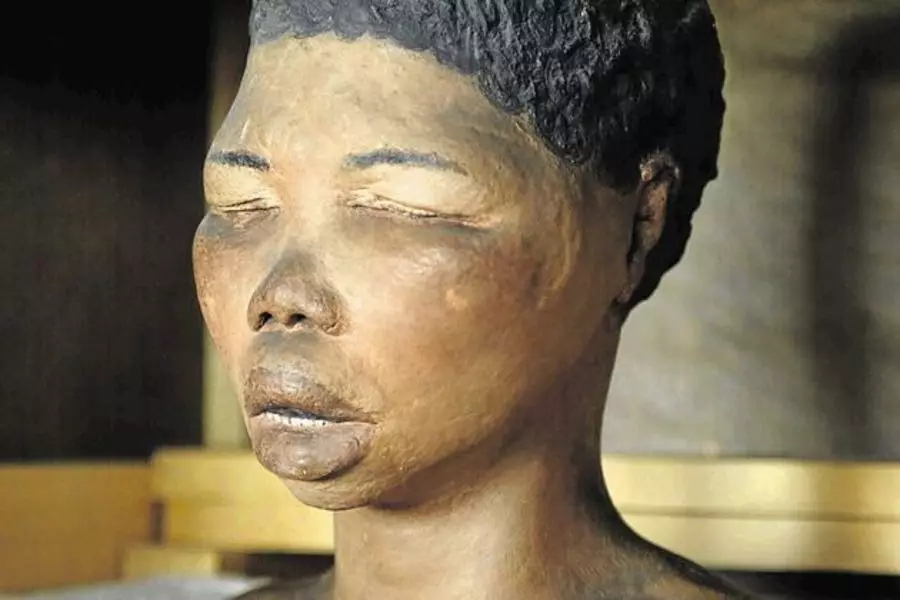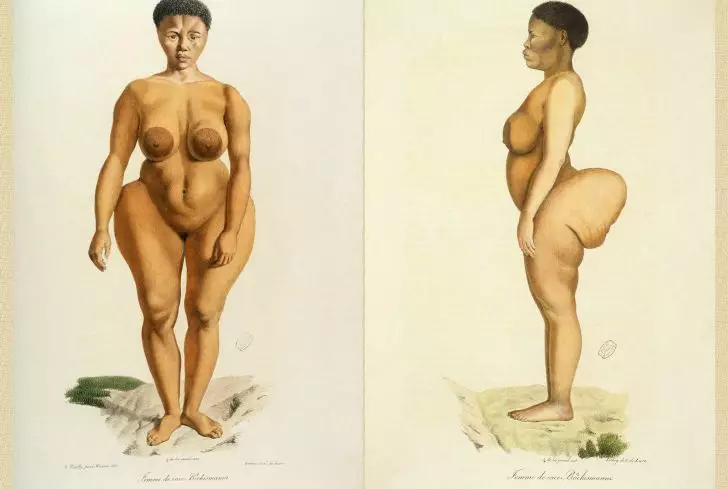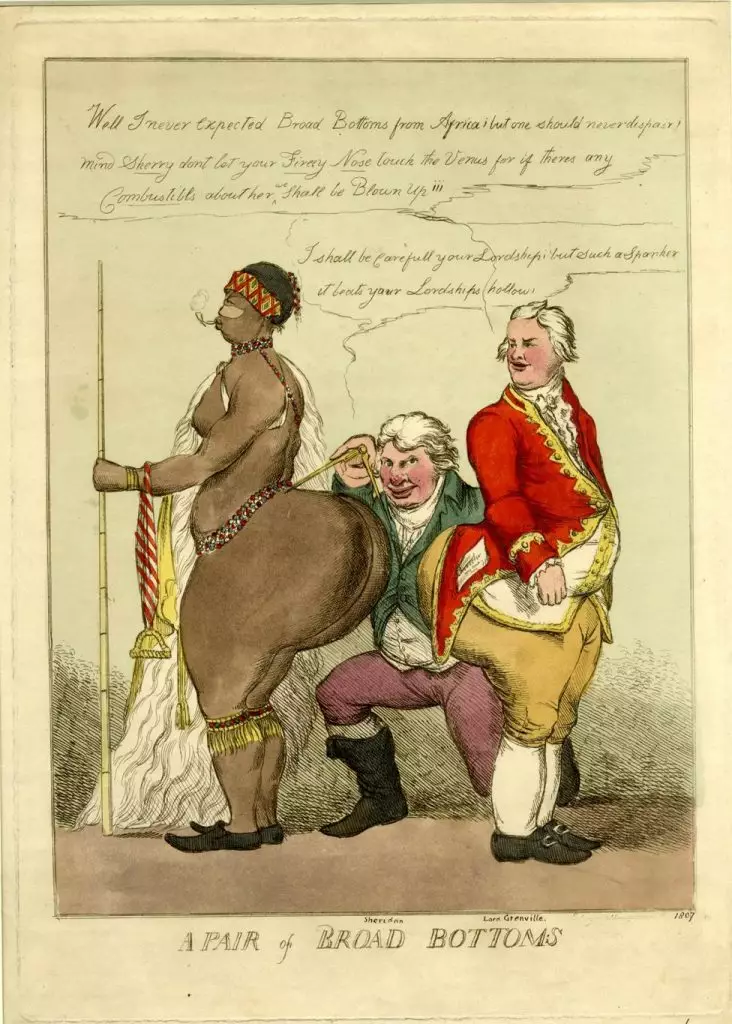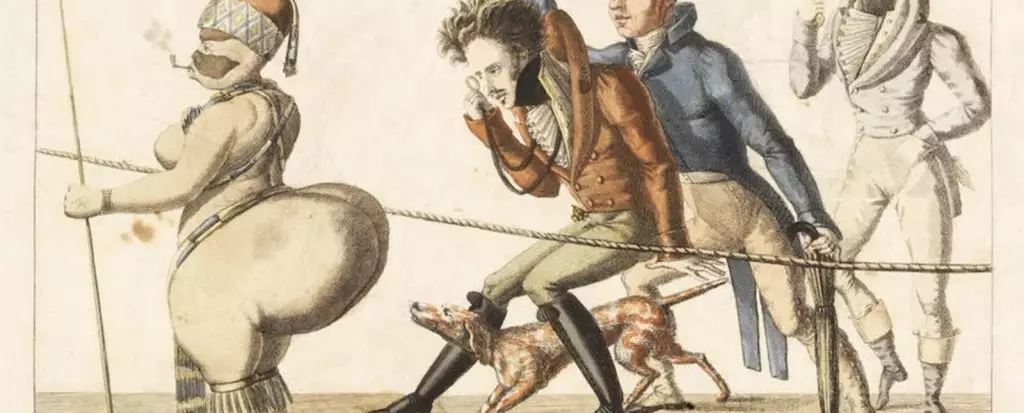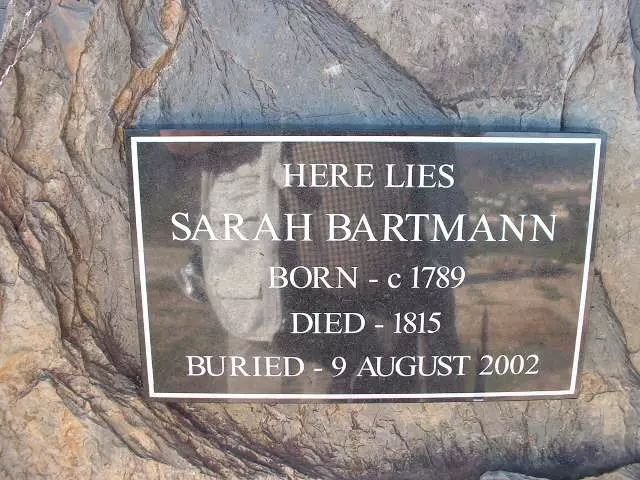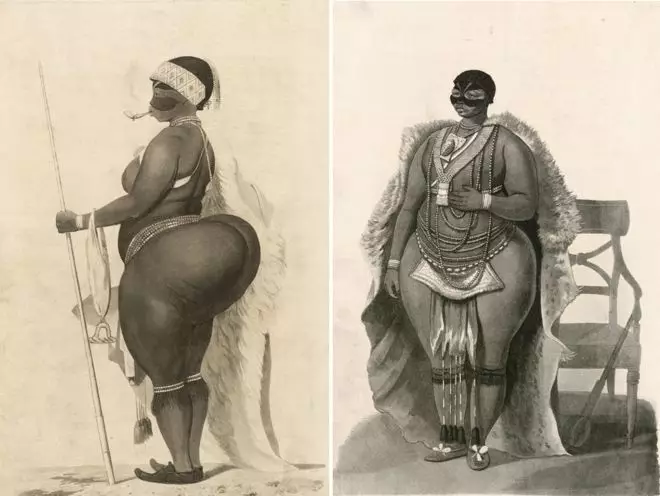
Blkjhgac!nsaf3
In the past, people who had a certain deformity or an anomalous trait were exhibited as objects for the entertainment of others without any consideration for their well-being. The same case was with Sarah Baartman. Her whole life she was being treated with abuse and mockery.
About Sarah
As we said, her name is Sarah Baartman (also known as Saartjie, short for Sarah in Dutch). It is not sure about the exact year of her birth, but it is assumed that is 1789. She was born in South Africa’s Eastern Cape. When she was only two years old, her mother passed away, and when she was just a teenager her father was murdered. She got married at a very young age and lost her baby.

source:buzzsouthafrica.com
Slavery
After losing everyone, she was sold to a slave trader Pieter Williem Cesars, a black freeman in Cape Town and was sent to live with his brother, Hendrik. One day, William Dunlop, an English surgeon suggested Pieter to take Sarah to London and promote her as a rare specimen. What made her so “special” was her figure: she had enormous buttocks and unusually large genitalia. She actually had steatopygia, a condition characterized by the accumulation of fat in the buttocks. Sarah signed a contract in which she would travel to England to continue her “performance” at certain events.

source:flashbak.com
The Freak Show
She was named the “Hottentot Venus,” a term that is used to designate those belonging to the Khoikhoi and San tribes. Dunlop put Sarah on display in London as a primitive and extraordinary phenomenon of nature, exhibiting her half-naked body to anyone who was willing to pay the one shilling admittance fee. For a higher price, the more affluent in society could touch her. Her large buttocks, in particular, were a point of interest. London fashion at the time emphasized women’s derrieres with extravagant bows and frilly bustles and Sarah’s buttocks where grotesquely inspected and secretly craved.

source:bbc.com
She was taken By An “Animal Trainer”
In 1864 Sarah was taken to France and sold to an animal handler called Reaux. Here her exploitation and degradation intensified as she was led around and given instruction like an animal, while her female organs were studied as an object of macabre interest and sexual peculiarity. It is also believed that during this time she fell, or was forced, into prostitution and became a heavy drinker. Reaux also prostituted her among aristocratic men who wanted to experience what it was like to have sex with a “unique specimen.”
Could It Be Worse?
Soon she became acquainted with George Cuvier, a prominent naturalist, and zoologist working at the Museum of Natural History, who got really interested in studying her. He believed in a cyclical process in which species became extinct to give way later to new, similar species. He asked Reaux for permission to study and analyze Sarah, and he agreed, leading to one of the first studies that started what became known as racial science. Cuvier published a text in which he claimed that Sarah Baartman was the link between the animal and the human families.

source:culturacolectiva.com
Her Death
Sarah died at the age of 26 from an inflammatory disease that was believed to be related to syphilis, alcoholism, smallpox, or pneumonia. Sadly her freak show display continued after her death. Although Cuvier did not perform an autopsy on Sarah, he did make a plaster cast of her body before dissecting it. He pickled her brain and genitalia and placed them in jars on display at the Musée de l’Homme in Paris. There they remained for over a century until 1974, as “proof” of Culvier’s theory of racial evolution. Her organs, genitalia, and buttocks were thought to be evidence of her sexual primitivism and intellectual equality with that of an orangutan.
Returning Sarah Home
Following South Africa’s first free and democratic elections, then president Nelson Mandela requested that Sarah’s remains be returned to the country for burial. France acceded to the request on March 6, 2002, and Sarah’s remains were repatriated to her homeland in the Gamtoos Valley two months later. She was buried on August 9, 2002, over 200 years after her birth.

source:baviaans.net
Sarah is the first documented Khoisan to arrive in Europe and, although much of her story has been lost, over the years she has come to be seen as the epitome of colonial exploitation, racism, and commodification of black people. Several books have been published about her treatment. The life of Sarah Baartman was first brought to public attention by the 1998 documentary The Life and Times of Sara Baartman and the 2010 film Black Venus.


